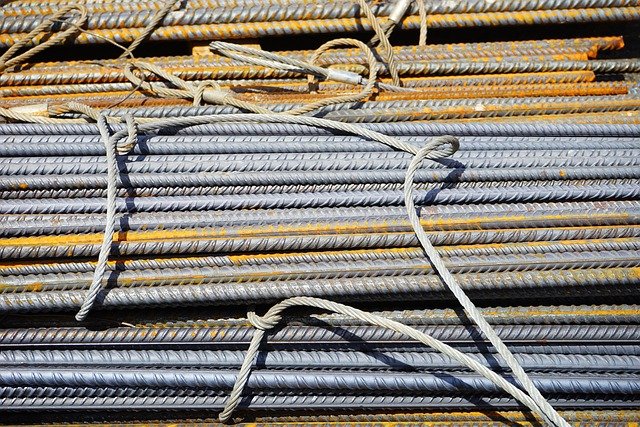Understanding Common Building Materials and Their Uses
Building materials are the things we use to make houses, schools, and other structures safe and strong. From wood and bricks to concrete and steel, each material has its own properties and uses. Learning about them helps people understand how buildings are made and why they last.

Traditional Construction Materials
Traditional construction materials have stood the test of time, forming the backbone of building practices for centuries. Concrete remains one of the most versatile options, offering exceptional compressive strength and durability for foundations, walls, and structural elements. Steel provides superior tensile strength, making it ideal for framework and reinforcement applications. Wood continues to be favored for residential construction due to its workability, insulation properties, and renewable nature. Brick and stone offer excellent thermal mass and weather resistance, particularly suited for exterior walls and decorative elements.
These materials have proven their reliability through decades of use, with established supply chains and skilled labor familiarity contributing to their continued popularity in construction projects.
Properties of Essential Building Materials
Understanding material properties is crucial for successful construction outcomes. Compressive strength determines how much load a material can bear before failing, with concrete excelling in this area while wood performs better under tension. Thermal conductivity affects energy efficiency, where materials like foam insulation provide excellent thermal resistance compared to metals that conduct heat readily.
Durability factors include resistance to moisture, UV radiation, and chemical exposure. Steel requires protective coatings to prevent corrosion, while naturally rot-resistant woods like cedar can withstand outdoor conditions without treatment. Fire resistance varies significantly, with concrete and steel maintaining structural integrity at high temperatures while untreated wood poses fire hazards.
Density impacts both structural load calculations and transportation costs, influencing material selection for different applications.
Sustainable Building Materials and Alternatives
Sustainable building materials address environmental concerns while maintaining construction quality. Recycled steel reduces mining impacts while providing identical performance to virgin materials. Bamboo offers rapid renewability, growing much faster than traditional timber while providing comparable strength properties.
Reclaimed wood provides character and environmental benefits by diverting materials from landfills. Rammed earth construction uses local soil resources, creating excellent thermal mass with minimal environmental impact. Cork flooring and insulation utilize renewable bark harvesting without harming trees.
These alternatives often require different installation techniques and may have higher upfront costs, but they contribute to green building certifications and long-term environmental goals.
Material Selection Criteria for Construction
Effective material selection balances multiple factors beyond initial cost. Climate considerations influence choices, as materials suitable for dry climates may fail in humid conditions. Local building codes specify minimum requirements for structural materials, fire resistance, and seismic performance.
Project timeline affects selection, as some materials require longer curing times or specialized installation procedures. Maintenance requirements vary dramatically, with materials like vinyl siding requiring minimal upkeep while wood siding needs regular painting and treatment.
Aesthetic preferences and architectural style guide visible material choices, ensuring the finished project meets design expectations while maintaining structural integrity.
Cost Analysis of Common Building Materials
Material costs fluctuate based on market conditions, transportation distances, and supply chain factors. Understanding these cost dynamics helps project planning and budgeting decisions.
| Material | Cost per Unit | Typical Application | Key Cost Factors |
|---|---|---|---|
| Concrete | $100-150/cubic yard | Foundations, slabs | Cement prices, delivery distance |
| Lumber | $400-800/thousand board feet | Framing, flooring | Species, grade, market volatility |
| Steel Rebar | $0.75-1.25/pound | Reinforcement | Iron ore prices, manufacturing costs |
| Brick | $300-600/thousand | Exterior walls | Clay quality, firing costs |
| Insulation | $1.50-3.00/square foot | Energy efficiency | Material type, R-value rating |
Prices, rates, or cost estimates mentioned in this article are based on the latest available information but may change over time. Independent research is advised before making financial decisions.
Labor costs often exceed material expenses, particularly for specialized installations. Regional variations in both material and labor pricing significantly impact total project costs, making local market research essential for accurate budgeting.
Conclusion
Selecting appropriate building materials requires careful consideration of performance requirements, environmental impact, and economic factors. Traditional materials offer proven reliability and established supply chains, while sustainable alternatives provide environmental benefits that may justify higher initial costs. Understanding material properties, local conditions, and cost dynamics enables informed decisions that balance immediate needs with long-term performance goals. Successful construction projects result from matching material characteristics to specific applications while considering budget constraints and sustainability objectives.




